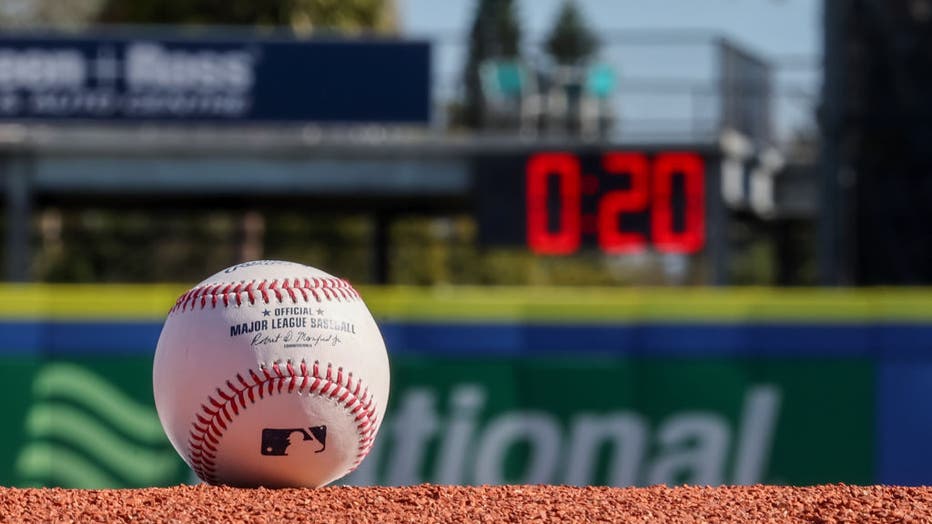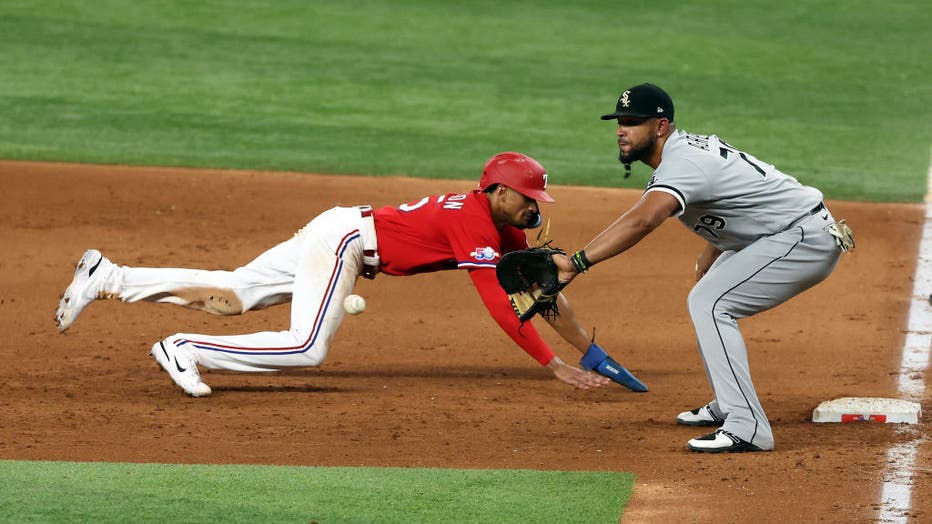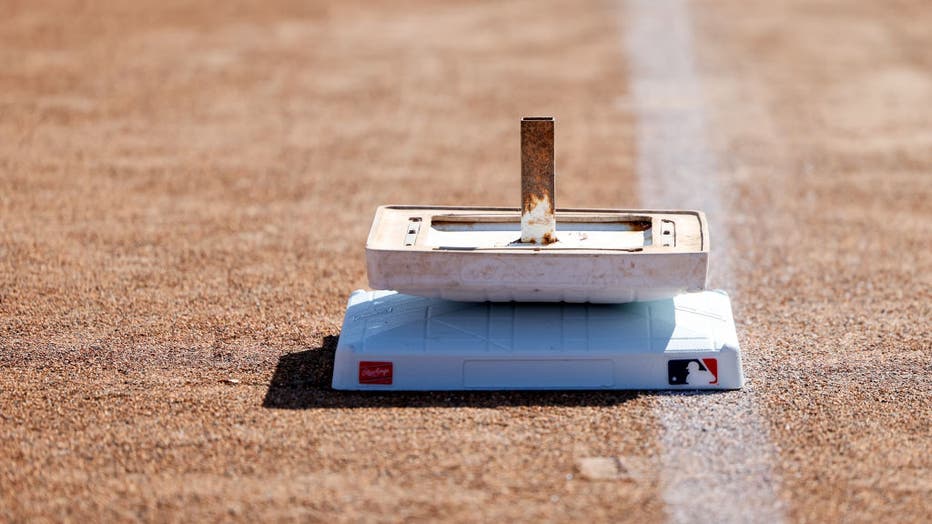MLB rule changes: pitch clock, larger bases and more
Rangers Opening Day: A look at what's new in baseball
It's opening day for the Texas Rangers. Good Day's Hanna Battah reports live from Globe Life Field on all of the changes in baseball for 2023. One new rule is designed to make the game much shorter.
Major League Baseball is introducing a slate of new rules for the 2023 season. Here is a breakdown:

DUNEDIN, FL - FEBRUARY 15: A detail shot of an Official Rawlings baseball on the field with a pitch clock in the background as new rule changes are demonstrated to assembled media during the On-Field Rules Demonstration at TD Ballpark on Wednesday, F
Pitch Clock
The pitch clock aims to speed the pace of play by eliminating down time between pitches. Players will have 30 seconds to resume play between batters. Between pitches, pitchers have 15 seconds with nobody on and 20 seconds if there is a baserunner. The pitcher must start his delivery before the clock expires. After a pitch, the clock starts again when the pitcher has the ball back, the catcher and batter are in the circle around home plate, and play is otherwise ready to resume.
Batters must be in the box and alert to the pitcher with at least eight seconds on the clock. Batters can call time once per plate appearance, stopping the countdown.
READ MORE: Rangers radio announcer Eric Nadel to miss start of season to treat mental health
When a pitcher fails to throw a pitch in time, the penalty is an automatic ball. When a batter isn’t ready in time, it’s an automatic strike.
Clocks will be positioned behind home plate and beyond the outfield, where pitchers and hitters can easily see them.

ARLINGTON, TEXAS - AUGUST 05: Bubba Thompson #65 of the Texas Rangers dives back to first base ahead of the pick-off throw to Jose Abreu #79 of the Chicago White Sox in the seventh inning at Globe Life Field on August 05, 2022 in Arlington, Texas. (P
Limits on pitcher disengagements
Pitchers may only disengage from the pitching rubber — either to call timeout or to attempt a pickoff throw — twice per plate appearance. After a pitcher has used his two disengagements, he can still attempt a pickoff, but it better be successful. If the baserunner gets back safely, a balk is assessed and the runner advances.
If a runner advances during a plate appearance, the limit on disengagements is reset. Mound visits, injury timeouts and offensive team timeouts are not considered disengagements.
READ MORE: Texas Rangers reveal new foods at Globe Life Field, including a 2-foot burger
With a focus on disengagements, umpires may be stricter in calling balks for pitchers who don’t come to a complete stop in their stretch.
Featured
Opening Day Guide: What you need to know about the Rangers home opener
There are a few things you should know before you head to the game.
Infield Shift Limits
The infield shift — putting three or more infielders on one side of second base, usually with one positioned in the outfield — has been a popular trend over the past decade, and many believe it has contributed to plummeting batting averages.
READ MORE: Hurst DPS trooper to throw out first pitch for Texas Rangers Opening Day
The new rule states that all four infielders must have both feet within the outer boundary of the infield and two infielders must be on each side of second base when a pitch is delivered. MLB also mandated infield dirt have uniform dimensions in all 30 ballparks — the outfield edge must be 95 feet from the front of the pitching rubber. Players will not be allowed to sprint from one side of second base to the other after the pitch is released, and umpires will be given broad discretion to ensure players are following the spirit of the rule.

DUNEDIN, FL - FEBRUARY 15: A detail shot of the new larger bases with an older base during the On-Field Rules Demonstration at TD Ballpark on Wednesday, February 15, 2023 in Dunedin, Florida. (Photo by Mike Carlson/MLB Photos via Getty Images)
Bigger Bases
New larger bases have been introduced to improve player safety and to modestly encourage more stolen-base attempts. The bases are now 18-square inches, up from 15-square inches. Home plate is now three inches closer to first and third base, while the corner bases are now 4 1/2 inches closer to second base.


